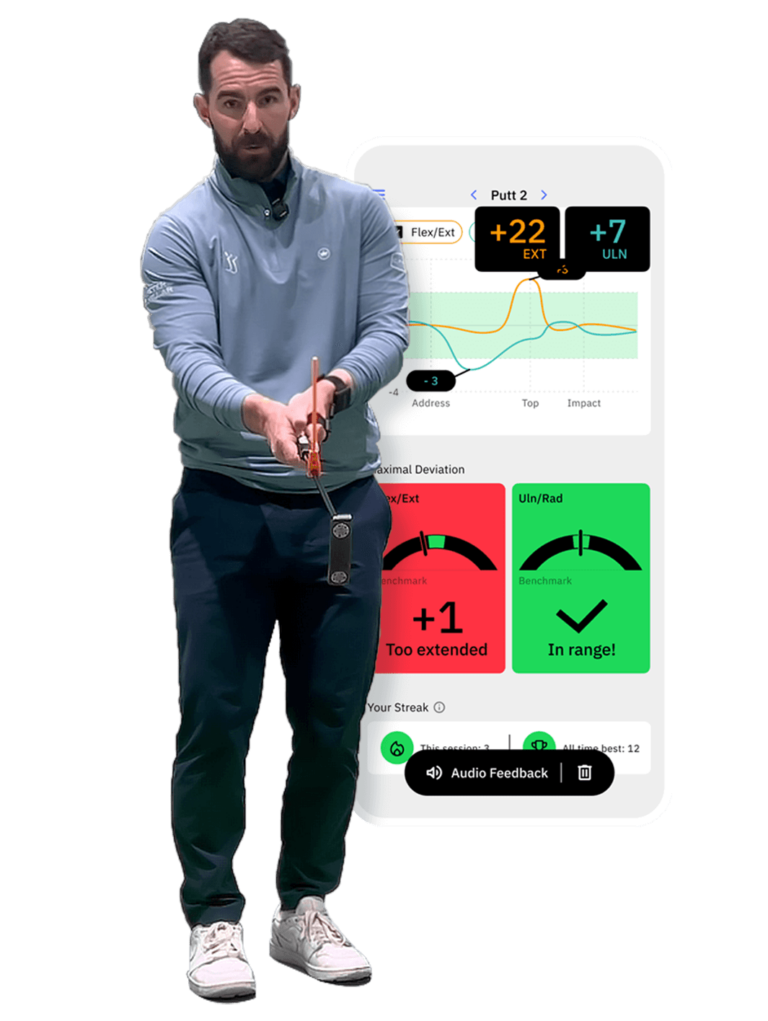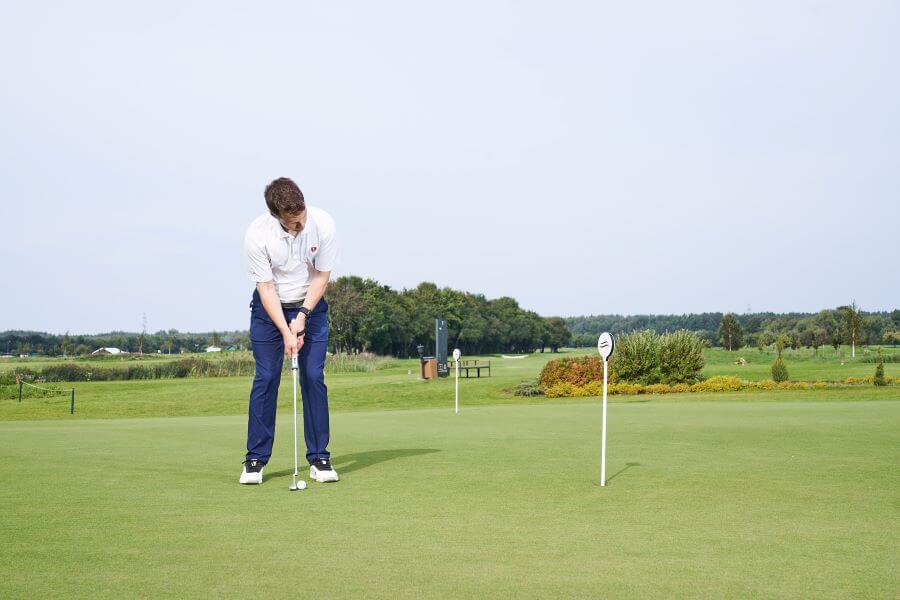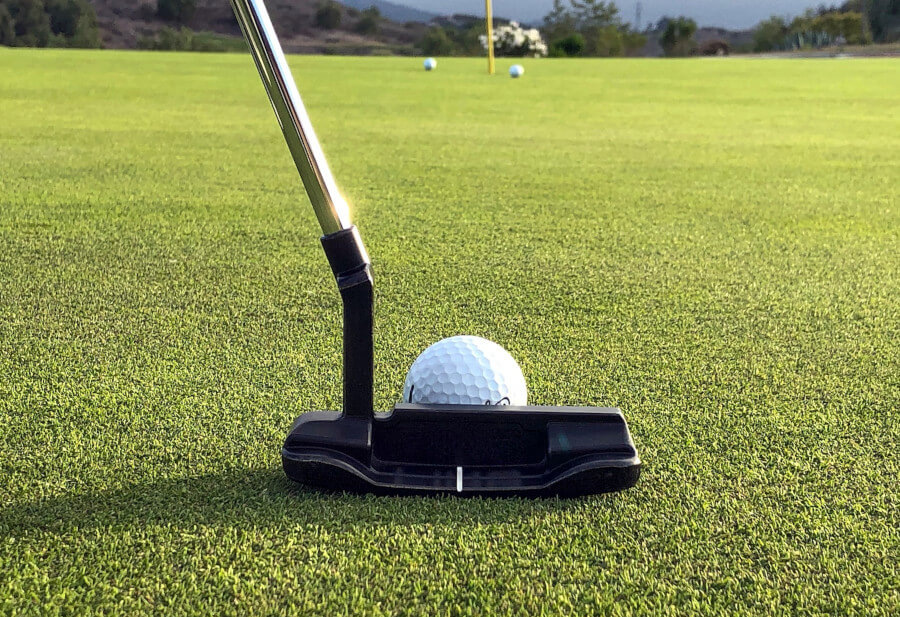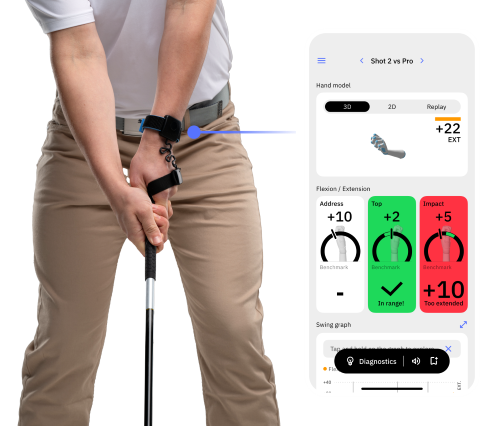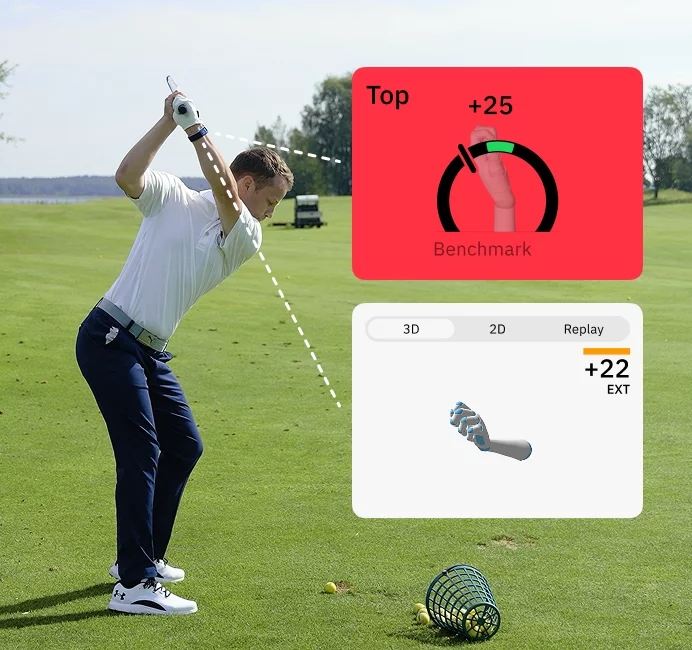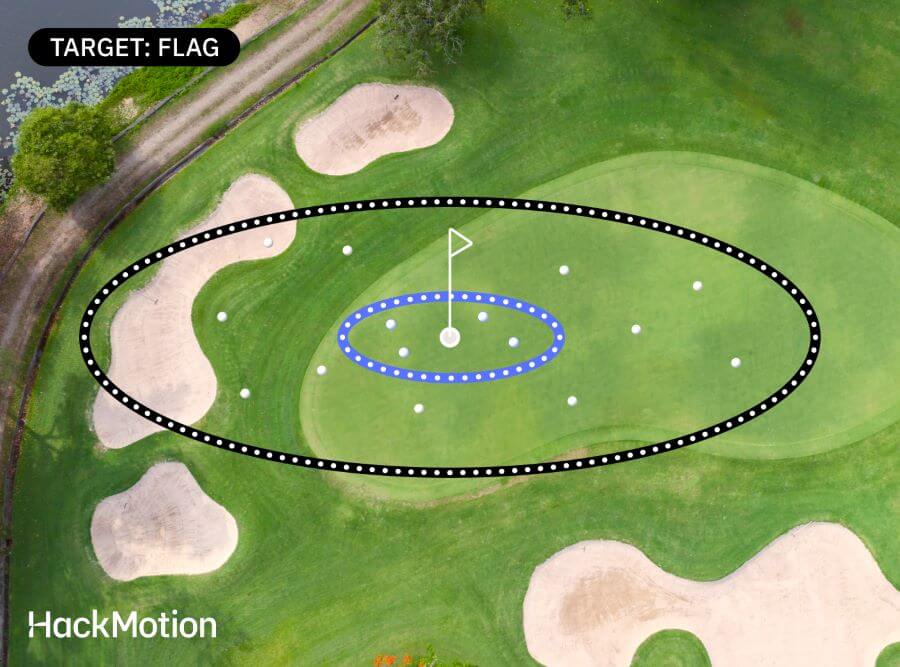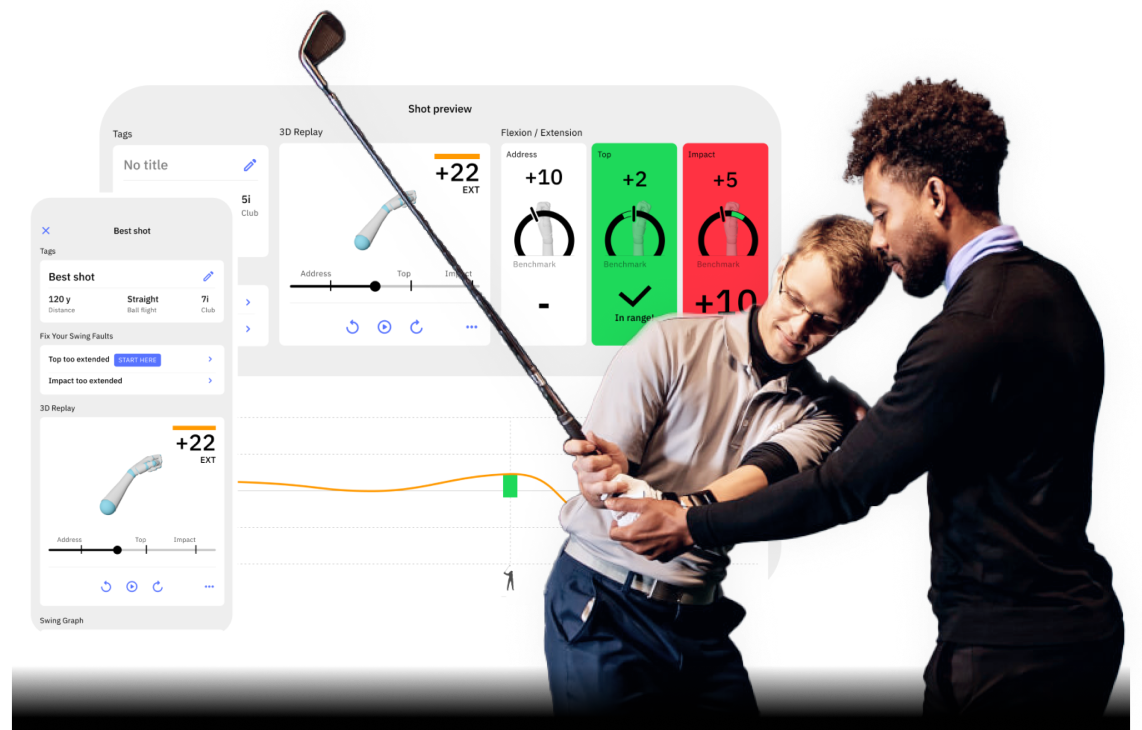6 Best Putting Drills to Practice at Home (Indoor-Friendly & Effective)
When the golf bug hits, finding time to practice can be tough, especially if you can’t make it to the course.
The good news? Putting is one of the easiest parts of the game to work on at home.
You don’t need a fancy mat or indoor setup, just a flat piece of carpet and a putter will do.
These six simple drills will help you improve wrist control, aim, distance management, and overall consistency.
Work on Putting at Home Key Takeaways)
If you don’t have time to work on these drills today, here are some of the most important takeaways to start getting your putting stroke under control.
- You don’t need fancy equipment to work on your putting, just a flat surface, a putter, and optional feedback tools like HackMotion.
- Wrist control matters more than wrist elimination; learning to manage flexion, extension, and deviation leads to more consistent strokes.
- Center-face contact is critical for speed control and distance consistency, and drills like the T-Rex Gate and Chopsticks help you train for that.
- Grip pressure affects wrist stability. Find the lightest grip that still allows you to maintain control through the stroke.
- Tempo and rhythm are often overlooked. The HackMotion metronome drill helps you develop consistent stroke timing across putt lengths.
- Lag putting is a feel skill; the towel drill builds touch and speed control in a way that translates directly to on-course performance.
Contents
6 Best Putting Drills to Practice at Home & Indoors
1. Loft Control Drill
Many golfers are told to eliminate wrist movement in their putting stroke, but that’s not realistic or helpful.
What matters most is how well you control your wrist action.
You can’t take the wrists completely out of it.
This drill helps you train consistent loft delivery by managing your wrist flexion and extension.
HackMotion Putting Flexion / Extension Drill
Get a feel for the wrist movement that controls your putter’s loft.
HackMotion Putting Flexion / Extension Drill – Step by Step
- Open the Loft Control Drill inside the HackMotion app and connect your sensor.
- Set up for your putt and allow the app to detect your address position.
- Make a few strokes and monitor how much your lead wrist is bowing (flexion) or cupping (extension).
- Let the vibration feedback signal when you’re outside the ideal range.
- Practice stabilizing your wrist angles so the putter delivers the same loft every time.
- Repeat until your data shows a repeatable stroke within the app’s target zone.
2. Chopsticks Drill
The Chopsticks Drill is a great way to experience what it’s like to move your body and arms as a single, connected unit during the stroke.
It reduces unnecessary wrist breakdown and builds a more reliable putting motion, all without needing high-tech gear.
- Video Timestamp: 7:18
Chopsticks Drill – Step by Step
- Take two alignment sticks and secure them at the bottom with a rubber band to create a “V” shape.
- Tuck the sticks under your arms so they stay in place during your stroke.
- Rest the putter shaft or grip in the cradle formed between the two sticks.
- Make strokes while keeping the shaft cradled and maintaining a unified motion through your body and arms.
- Wear HackMotion to ensure your lead wrist stays steady and doesn’t collapse or overextend.
3. Stroke Length and Timing Drill
One of the most overlooked skills in putting is rhythm and tempo.
This drill uses HackMotion’s metronome feature to help you sync your backstroke and follow through, no matter the putt distance. It trains the stroke timing that stay consistent, even when your stroke length changes.
Stroke Length and Timing Drill – Step by Step
- Use tees or markers to set up three stroke lengths that match short, medium, and long putts (e.g., 2m, 4m, 10m).
- Open the Metronome feature in the HackMotion app and select a beat setting (75 BPM is a good starting point).
- Without a ball, begin practicing backstroke and follow-through timing to match the beats, one beat at the end of each movement.
- Once comfortable, add a ball and practice hitting putts using those same stroke lengths, keeping the tempo constant.
- Experiment with faster or slower tempos to see what feels best, then train consistently at your preferred rhythm.
- Use HackMotion’s feedback to ensure your tempo remains stable and your wrist angles don’t break down during the motion.
4. T-Rex Sweet Spot Gate Drill
This drill helps improve your ability to strike the ball on the center of the putter face by combining a better wrist setup with a visual gate.
It’s a favorite among tour players and coaches because it trains sweet spot control and reduces excess wrist movement during the stroke.
The “T-Rex” setup also limits unwanted deviation by promoting a more stable wrist condition at address.
T-Rex Sweet Spot Gate – Step by Step
- Place two tees in the ground just slightly wider than your putter head to create a “gate.”
- Hold the putter out in front of you and align the shaft with your forearms.
- Set your wrists into slight ulnar deviation by pointing your index fingers downward (as if mimicking toy guns).
- Keep your elbows in close; this is the “T-Rex” setup, helping minimize free wrist motion.
- Bend forward into your putting posture while maintaining that arm and wrist position.
- Place a ball between the tees and stroke putts while trying to: Keep the putter head moving through the gate without hitting the tees. Hold your finish position to reinforce stability and feel centered contact.
- Vary putt distances to see if you can maintain center-face strikes even as stroke length increases.
- Use HackMotion to measure wrist deviation and ensure your angles stay within range during the motion.
5. Grip Pressure Stability Drill
How tightly should you grip the putter? This drill helps you answer that by using HackMotion to measure how grip pressure affects wrist motion.
A lighter grip can increase feel and feedback, but if it causes excessive wrist movement, it may hurt your performance.
This drill demonstrates how to find the lightest grip that still maintains a stable stroke, and it’s easy to work on at home.
Grip Pressure Stability Drill – Step by Step
- Set up your HackMotion sensor and app to measure radial/ulnar deviation and flexion/extension during your stroke.
- Start by gripping the putter very lightly and hitting a series of short putts.
- Observe the HackMotion data: Are your wrists staying relatively stable (especially in radial/ulnar deviation)? Are you producing excess movement during the stroke?
- Gradually increase grip pressure and repeat the same putts until you find the lightest pressure where your wrist motion remains stable.
- Try the same test with longer putts or faster stroke tempos. Note that longer putts may require slightly firmer grip pressure to maintain control.
- Use your results to establish a feel baseline: smoother, shorter strokes = lighter grip; longer or quicker strokes = firmer grip.
6. Lag Putting Towel Drill
When practicing indoors with limited space, this drill helps you refine your lag putting feel and speed control.
All you need is a towel and a flat surface. It’s simple, but effective for grouping your putts and learning to adjust pace, especially helpful during winter or off-course training sessions.
- Video Timestamp: 5:38
Lag Putting Towel Drill – Step by Step
- Place a small towel (or any soft target) flat on the ground, 6–15 feet away, depending on your space.
- Hit a series of putts trying to stop the ball on the towel not just near it.
- Focus on touch and pace rather than technique. The goal is to consistently control distance.
- Track how many balls land and stay on the towel out of 5 or 10 attempts.
- Move the towel closer or farther away to simulate different lag distances.
- For an extra challenge, switch to slower or faster indoor putting surfaces to test your adaptability.
- Pair with a feel drill (like tossing a ball underhand to the same towel) to strengthen internal pacing instincts.
Final Thoughts
In addition to practicing drills at home with your putter, ensure you are also adding some pressure.
Use these drills to make your putts count and ensure that you focus on each one. It’s one of the only ways to carry your practice to the course. Using HackMotion feedback will also make practice more entertaining.
Simply rolling golf balls around your bedroom carpet isn’t going to help you become a better player.
